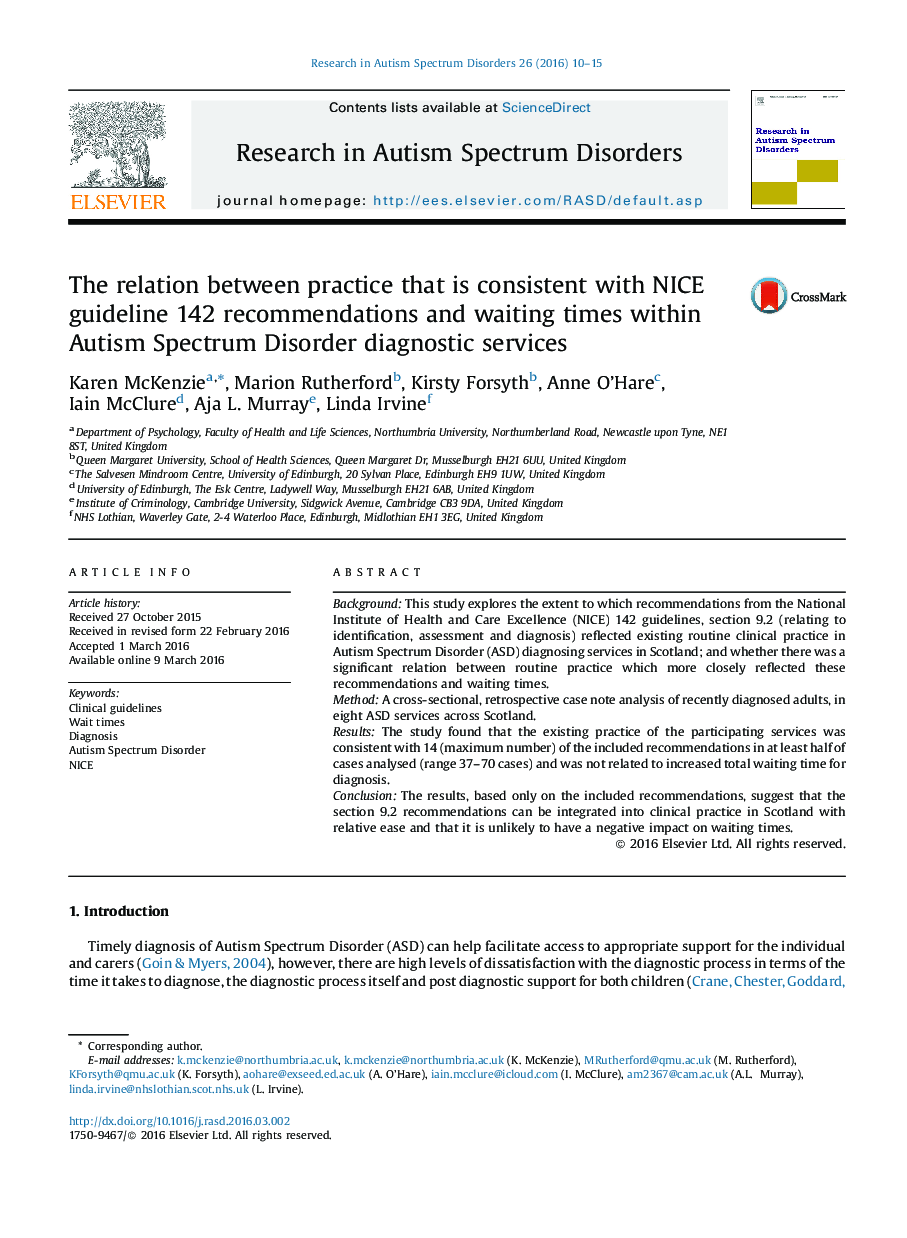| کد مقاله | کد نشریه | سال انتشار | مقاله انگلیسی | نسخه تمام متن |
|---|---|---|---|---|
| 369950 | 621830 | 2016 | 6 صفحه PDF | دانلود رایگان |
• Clinicians may not implement guidelines because of concerns about their impact on waiting times.
• We explored whether routine practice reflected recent NICE142 Guidelines in Scottish services.
• Practice was broadly consistent with NICE142 in relation to diagnosis of people with ASD.
• Practice consistent with NICE142 was not related to increased waiting time for diagnosis.
BackgroundThis study explores the extent to which recommendations from the National Institute of Health and Care Excellence (NICE) 142 guidelines, section 9.2 (relating to identification, assessment and diagnosis) reflected existing routine clinical practice in Autism Spectrum Disorder (ASD) diagnosing services in Scotland; and whether there was a significant relation between routine practice which more closely reflected these recommendations and waiting times.MethodA cross-sectional, retrospective case note analysis of recently diagnosed adults, in eight ASD services across Scotland.ResultsThe study found that the existing practice of the participating services was consistent with 14 (maximum number) of the included recommendations in at least half of cases analysed (range 37–70 cases) and was not related to increased total waiting time for diagnosis.ConclusionThe results, based only on the included recommendations, suggest that the section 9.2 recommendations can be integrated into clinical practice in Scotland with relative ease and that it is unlikely to have a negative impact on waiting times.
Journal: Research in Autism Spectrum Disorders - Volume 26, June 2016, Pages 10–15
